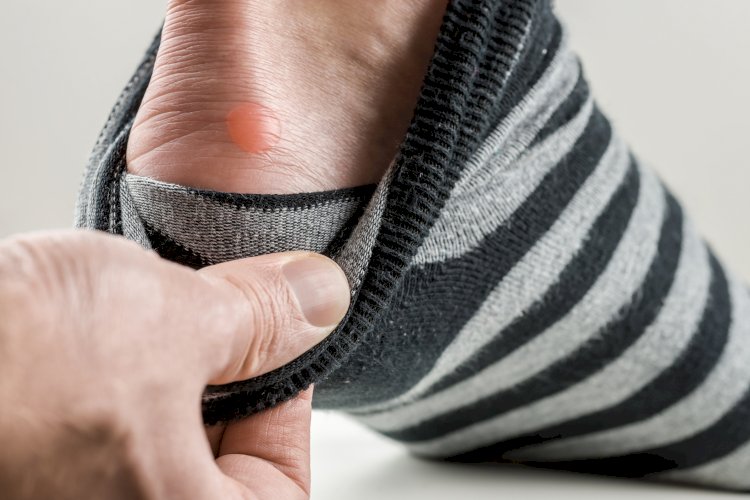A Detailed Study Of Blisters And Its Causes And Treatments
Blisters are common among people. Whereas the causes and treatments are varied. Get to know more about how to handle blisters.

What Are Blisters?
Under the top layer of your skin, they are the bubbles that pop up when fluid collects in pockets. It was found that they can be filled with pus, blood, or the clear watery part of your blood that is called serum. Shaped like circles are most of them. Your blister could itch or hurt a lot or a little depending on the cause. As a single bubble or in clusters they can appear.
Friction
One of the most common kinds is friction blisters named for what causes them. It is good to think back. Before you broke them in have you ever worn a new pair of hiking boots? Without a pair of garden gloves on your hands, have you raked the yard? Causing a friction blister on your heel, toe, thumb, or palm are these kinds of things.
Cold And Heat
You could get blisters from frostbite when you go without gloves in winter. You might get a sunburn if you stay out in the summer sun for too long. If you handle frozen goods or touch the stove burner, the same thing can happen. For good reason, both cold and heat are described as blistering which is hurting your skin that is extreme temperatures. Called partial-thickness blisters are a sign of a type of second-degree burn.
Contact Dermatitis
You might end up with blisters of another sort when you rub up against a pesky plant like poison ivy. Happening when you touch something you are allergic to are they, which is often a symptom of contact dermatitis. Though it doesn’t have to be poisonous. People are reacting to soap, perfume, detergent, fabric, jewellery, latex gloves, or things used to make tools, toys as also other everyday objects.
Bug Bites
For some itchy blisters, insects can take the blame. Sometimes leaving curved lines of blisters in their tracks are scabies that are tiny mites that drill into your skin. Often attacking the hands, feet, wrists, and under the arms are they. Causing little blisters too are flea and bedbug bites. That blisters before bursting to form a painful open sore are the brown recluse spider with an extra-nasty bite. Go to the doctor right away if that describes your blister.
Chickenpox & Shingles
Causing blisters are some viruses. A common culprit is the herpes virus. Starting with red bumps that become blisters and then scab over is present in chickenpox which is a contagious illness. Targeting nerves and causes a painful rash with blisters is shingles that you can get in case you have had chickenpox. To prevent shingles, the CDC says people 60 and older should get a one-time vaccination. For anyone who hasn’t had the disease, it also recommends two doses of chickenpox vaccine.
Herpes Simplex
A sign of the herpes simplex virus is fever blisters on your lips, mouth, or genitals. As symptoms are usually mild, many people don’t know they have herpes. Talk to your doctor if you have fever blisters or you think you have been exposed to herpes. Certain drugs can prevent or shorten outbreaks whereas there is no cure.
Hand-Foot-and-Mouth Disease
Named after the blisters it causes on these body parts is this disease. Mostly hitting kids younger than 10 is the infection. It is observed that the virus spreads thereby through contact with mucus, saliva, faeces, as well as blisters of someone who is already sick. We find here the infection starting with mild fever, runny nose, and sore throat. The big clue that leads to a diagnosis is these blisters.
Keep It Clean And Dry
On their own, some blisters get better. The blister flattens and peels off as your skin absorbs the fluid. You can use a donut-shaped piece of moleskin padding or tape to help keep it from breaking open until that happens.
Don’t Pop if You Don’t Have To
Unless it's so large that is bigger than a nickel or painful that you can’t get around, resist the urge to pop a blister. To let the fluid, drain out, if that is the case, your doctor might decide to puncture it with a sterile needle. Gently wash the area with soap and water and apply antibiotic ointment once it's popped whether your doctor does it or it breaks on its own. Take the bandage off at night to let it dry after covering it with a bandage to keep it clean during the day.
The Final Words As To When To See Your Doctor
If you have a fever, chills, or other flu-like symptoms at the same time you have blisters, go to the doctor. It is possible that you could have a virus or an infection. Pain, swelling, redness or warmth, red streaks leading away from your blister, or pus coming from it are other symptoms of infection. A cause for concern is blistering around your eyes or on your genitals.
What's Your Reaction?





















